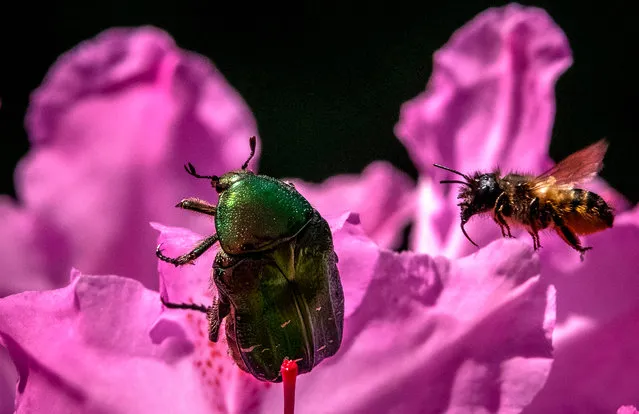
A goldsmith beetle (cetonia aurata) crawls on rhododendron flowers as a bee approaches it in a garden outside Moscow, Russia on June 10, 2020. (Photo by Yuri Kadobnov/AFP Photo)
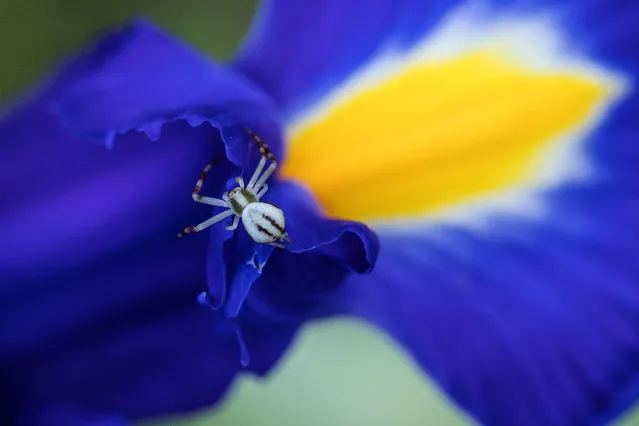
A goldenrod crab spider (Misumena vatia) walks on a blue flower in Saint-Philbert-sur-Risle, northern France on May 21, 2020. (Photo by Joel Saget/AFP Photo)
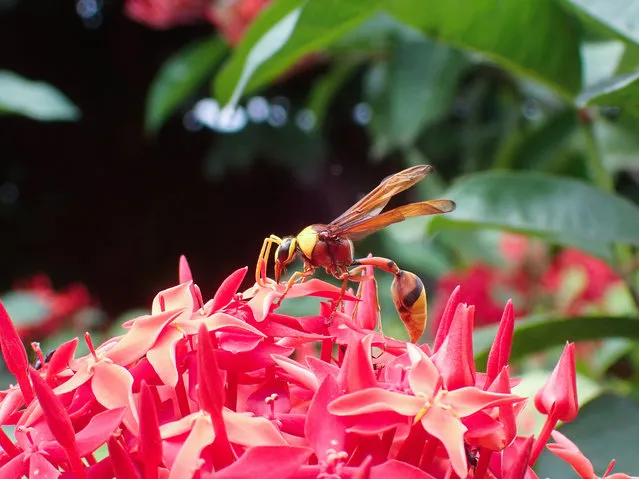
A red wasp pollinates a flower in Ahmedabad on August 25, 2020. (Photo by Sam PanthakyAFP Photo)
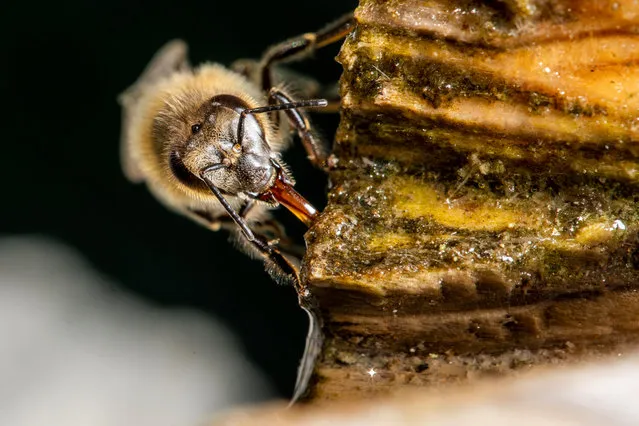
A Western honey bee feeds off acacia pollen at an apiary in Nagyszenas, eastern Hungary, 25 April 2020. The preparation of the bees for the acacia bloom began two weeks later than usual this year; due to the late frosts, this season's yield of Hungaricum acacia honey is expected to be lower. (Photo by Tibor Rosta/EPA/EFE)
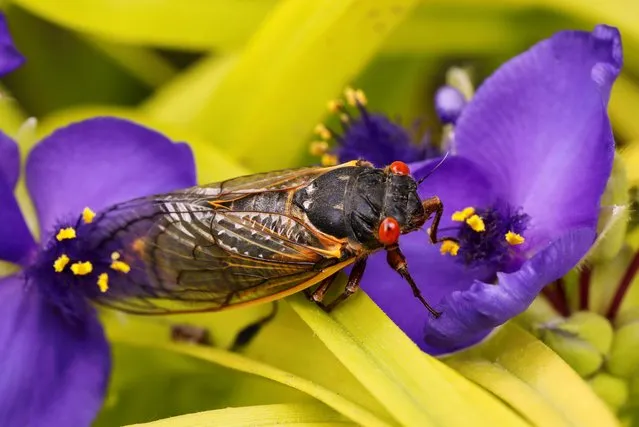
A cicada from Brood X clings to a flower after emerging from 17 years underground to join the trillions of cicadas that will surface in eastern U.S. states in the coming weeks, in Falls Church, Virginia, May 17, 2021. (Photo by Kevin Lamarque/Reuters)
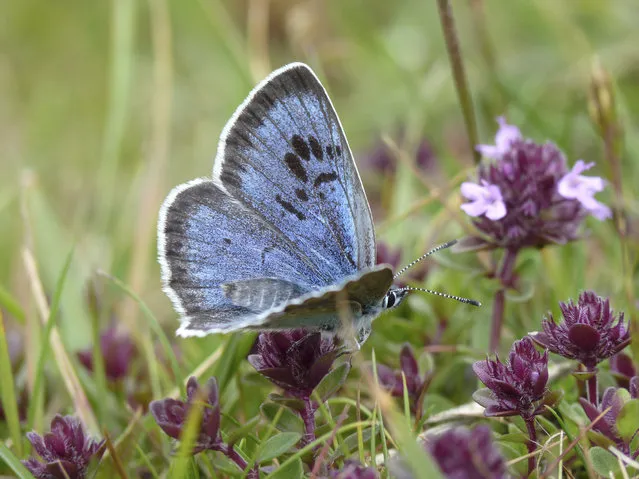
Record-breaking sunshine has encouraged midsummer butterflies to emerge unusually early, with dozens of species appearing a month before their usual flight season. The large blue is among the species that has been spotted earlier than any season in almost 50 years. (Photo by Matthew Oates/National Trust Images)
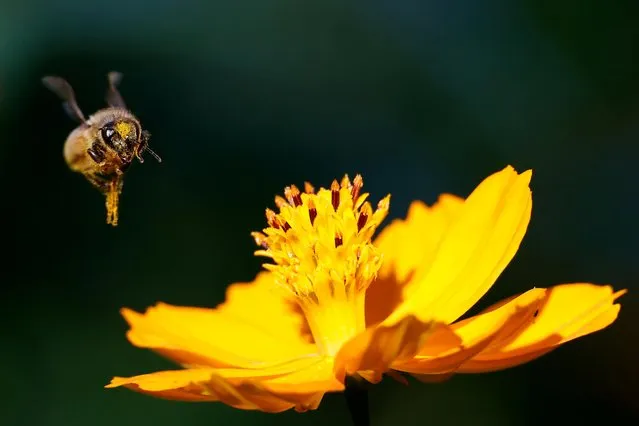
A bee flies over a cosmos flower at a park in Seoul, South Korea, September 13, 2021. (Photo by Kim Hong-Ji/Reuters)
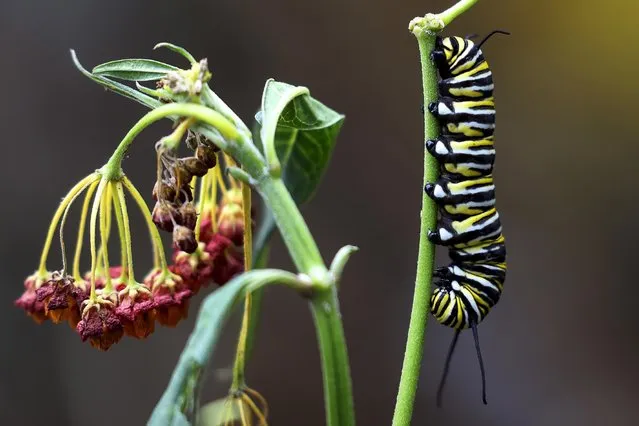
A Monarch butterfly caterpillar is pictured on a plant in North Miami Beach, Florida on March 19, 2016. (Photo by Carlo Allegri/Reuters)
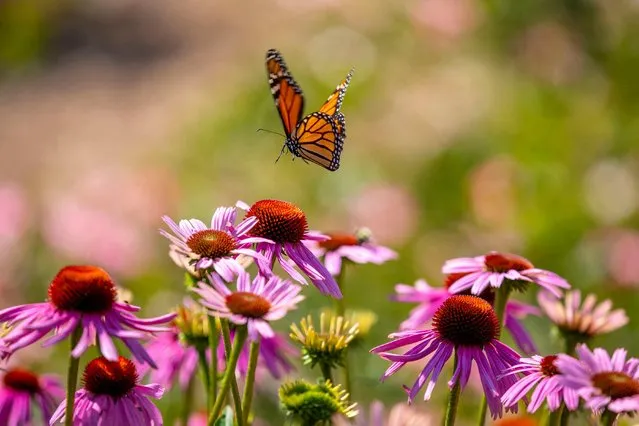
A Monarch butterfly, which is now placed in the endangered category of the International Union for the Conservation of Nature's Red List of Threatened Species, flies at the Royal Botanical Gardens in Burlington, Ontario, Canada on July 21, 2022. (Photo by Carlos Osorio/Reuters)
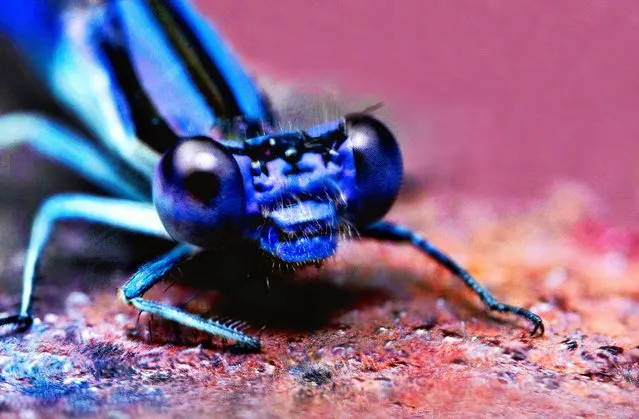
A macro shot of a dmaselfly at Laurel Hill Park in Virginia on July 31, 2022. (Photo by Diaa Bekheet)
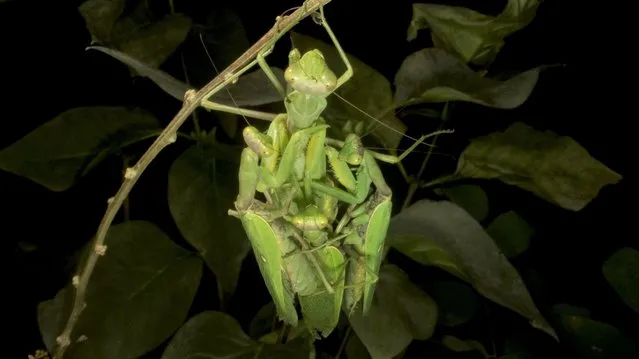
Praying mantises copulate two male and female in Odessa region, Ukraine on August 13, 2022. Close up of mantis insect. (Photo by Andrey Nekrasov/ZUMA Press Wire/Rex Features/Shutterstock)
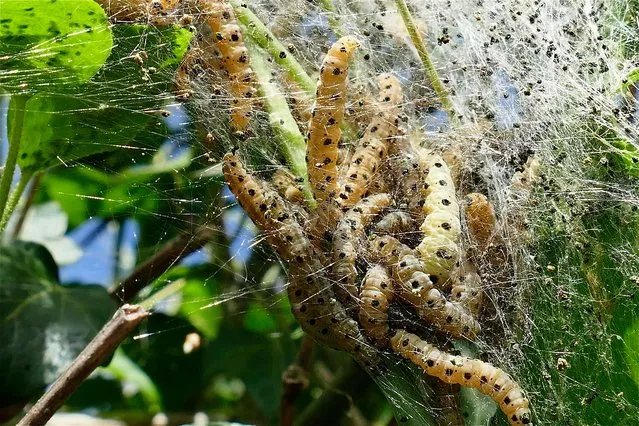
Oak moth caterpillars underneath a carpet of webbing on hedgerows in Henley on Thames, England on May 17, 2022. (Photo by Geoffrey Swaine/Rex Features/Shutterstock)
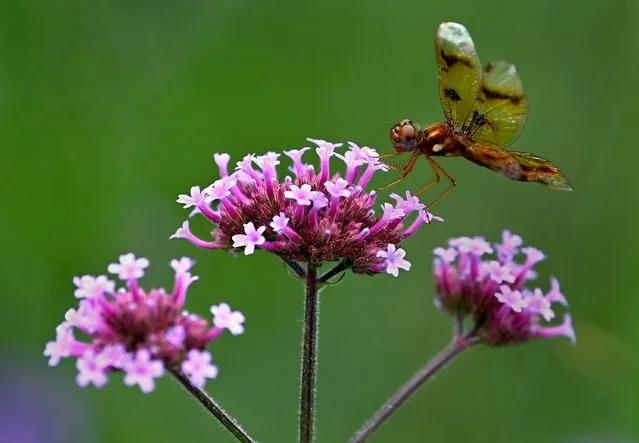
A dragonfly lands on a flower at Brookside Gardens in Wheaton, Maryland on June 21, 2022. Today was the first day of Summer and the weather in the Washington, D.C. area was rather tame for a summer day.(Photo by Michael S. Williamson/The Washington Post)
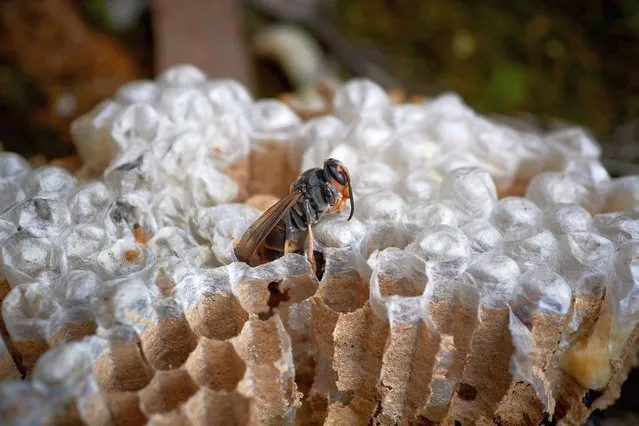
A newborn Asian hornet is pictured in the nest after being destroyed by a pests exterminator it in Viveiro, northwestern Spain, on August 10, 2022. The Asian hornet, or vespa velutina nigrithorax, is considered a “public enemy” in Spain and other European countries where it devours native bees and, experts say, threatens biodiversity. (Photo by Miguel Riopa/AFP Photo)
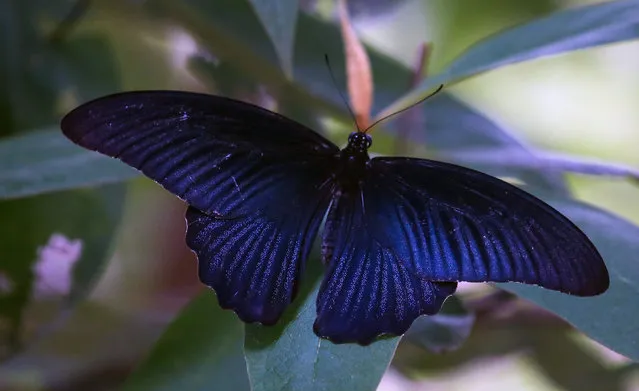
Himalayan Spangle (Papilio protenor Cramer) rests on leaves of a tree at a garden in Kathmandu, Nepal on August 14, 2022. Papilio protenor, commonly called Spangle are species of butterfly, found in many parts of Southeast Asia. (Photo by Sunil Sharma/ZUMA Press Wire/Rex Features/Shutterstock)
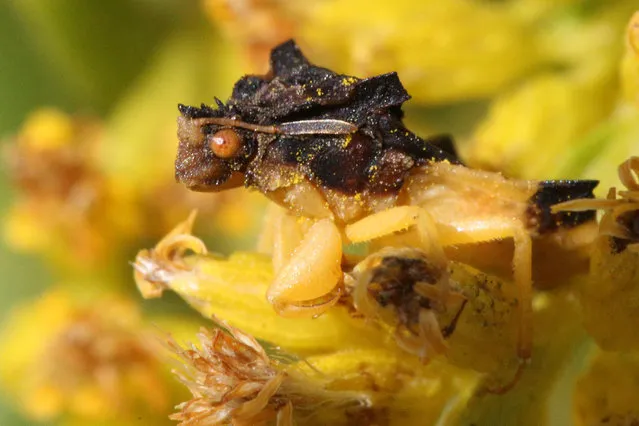
Jagged ambush bug (Phymata spp.) in Toronto, Ontario, Canada, on September 11, 2021. (Photo by Creative Touch Imaging Ltd/NurPhoto/Rex Features/Shutterstock)
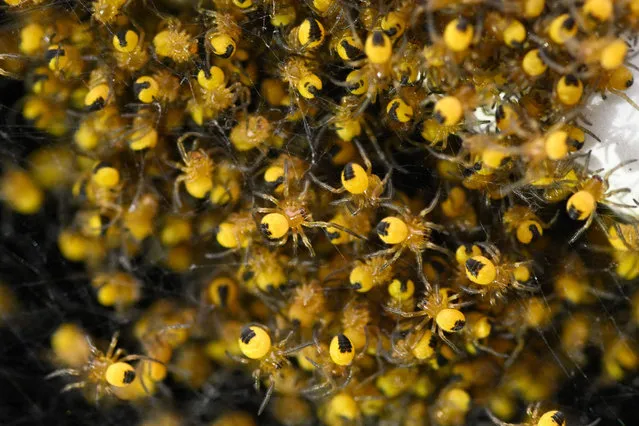
Young european garden spiders (Epeire Diademe, Araneus diadematus) gather on a car wing in Hede-Bazouges, suburb of Rennes, western France on April, 29, 2022. (Photo by Damien Meyer/AFP Photo)
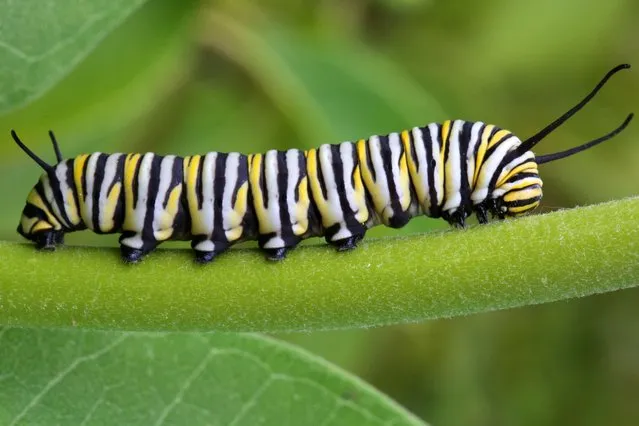
Monarch butterfly caterpillar (Danaus plexippus) on a milkweed plant (Asclepias syriaca) in Markham, Ontario, Canada, on June 26, 2022. (Photo by Creative Touch Imaging Ltd./NurPhoto via Getty Images)
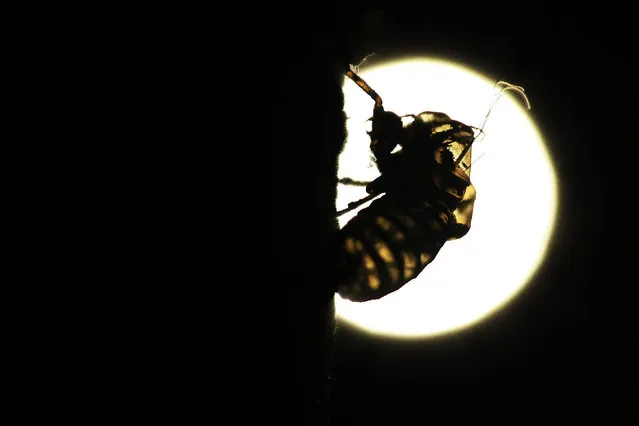
The empty shell of a periodical cicada nymph clings to a tree after the adult insect molted on May 10, 2021 in Takoma Park, Maryland. Once soil temperatures reach about 64°F, billions and billions of these periodical cicadas – members of Brood X – will emerge in fifteen states and the District of Columbia after living underground for 17 years. The cicadas will emerge, molt, mate, lay eggs and die within a matter of weeks. (Photo by Chip Somodevilla/Getty Images)
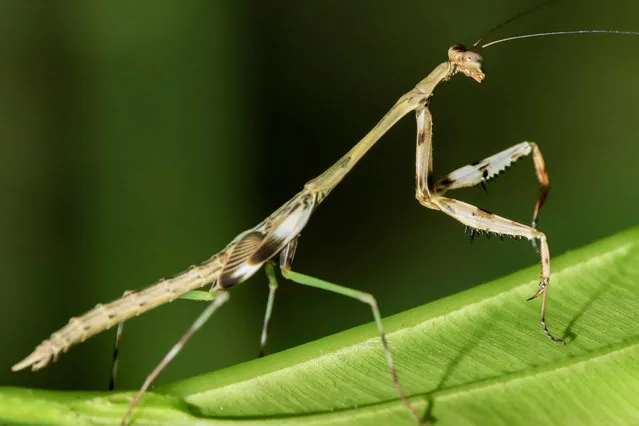
A praying mantis in the highest mountainous area of Costa Rica, which is located in the Chirripó Valley, southwest of San Jose, Costa Rica, on 24 November 2022. The Chirripó Valley is an area full of nature, landscapes, traditions and gastronomy that seeks to open up more and more to visitors and become a recognized destination in this country that has tourism as one of its main engines. (Photo by Jeffrey Arguedas/EPA/EFE)
08 Jan 2023 06:19:00,
post received
0 comments
